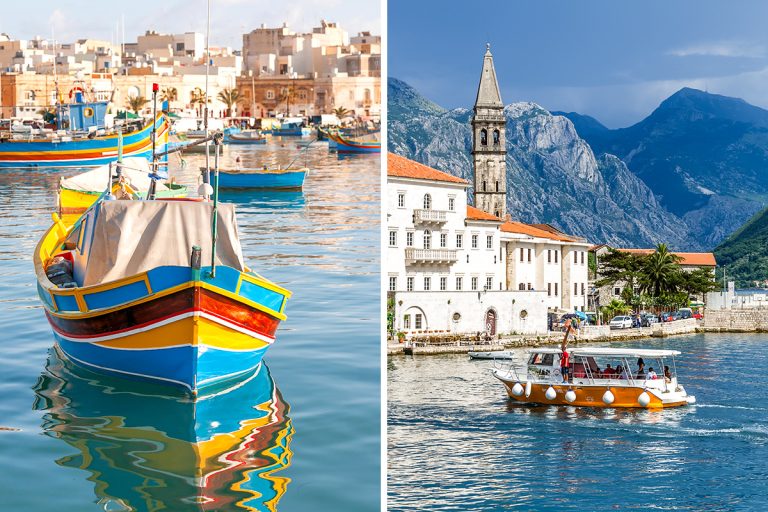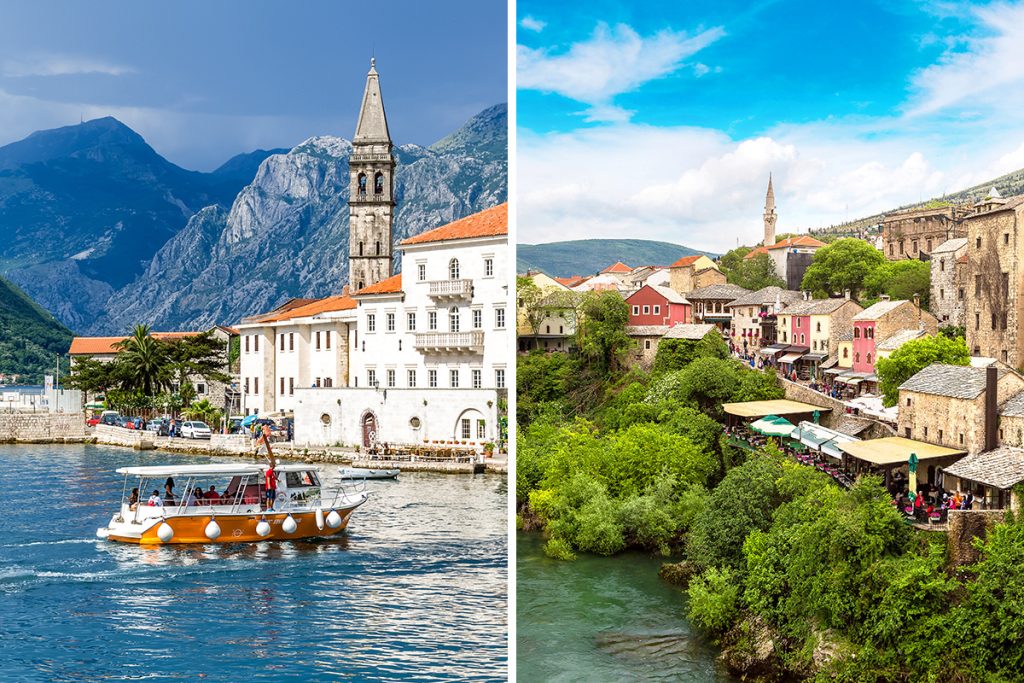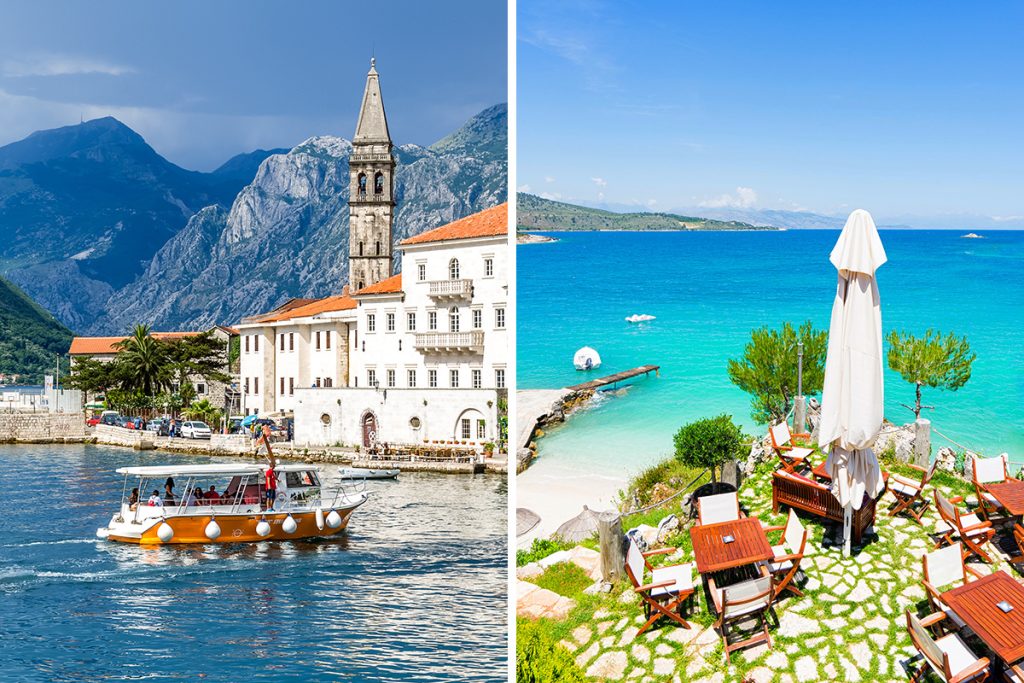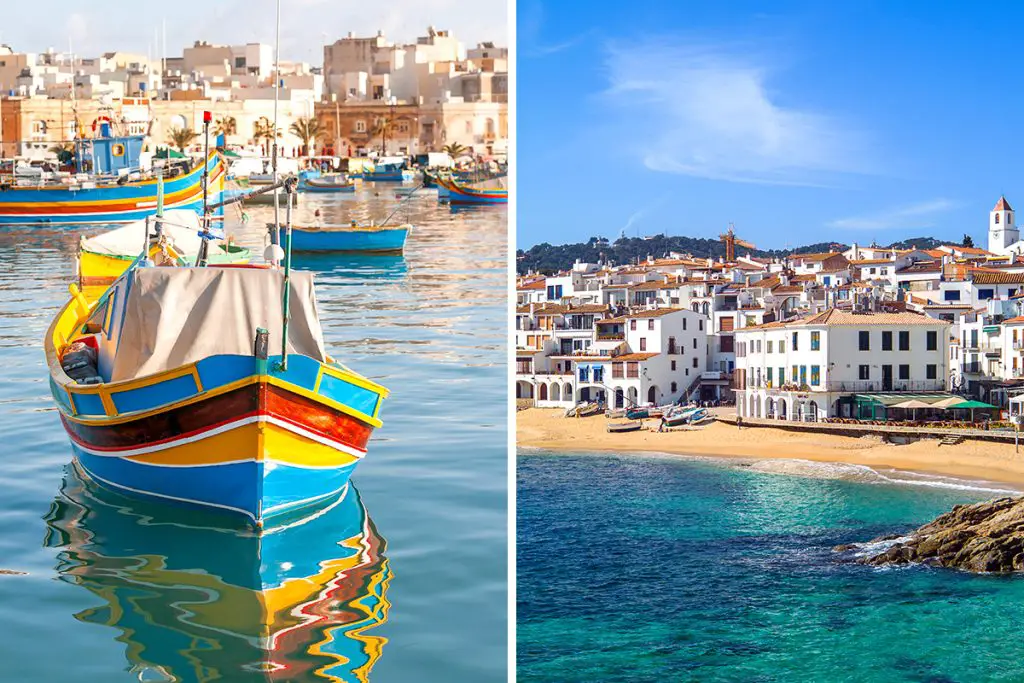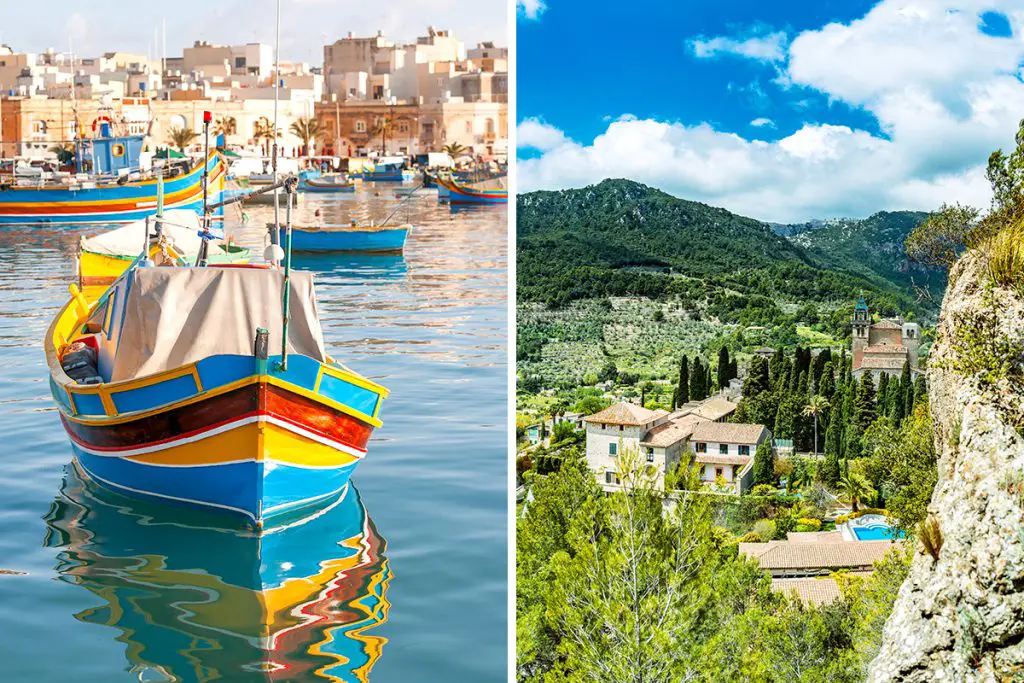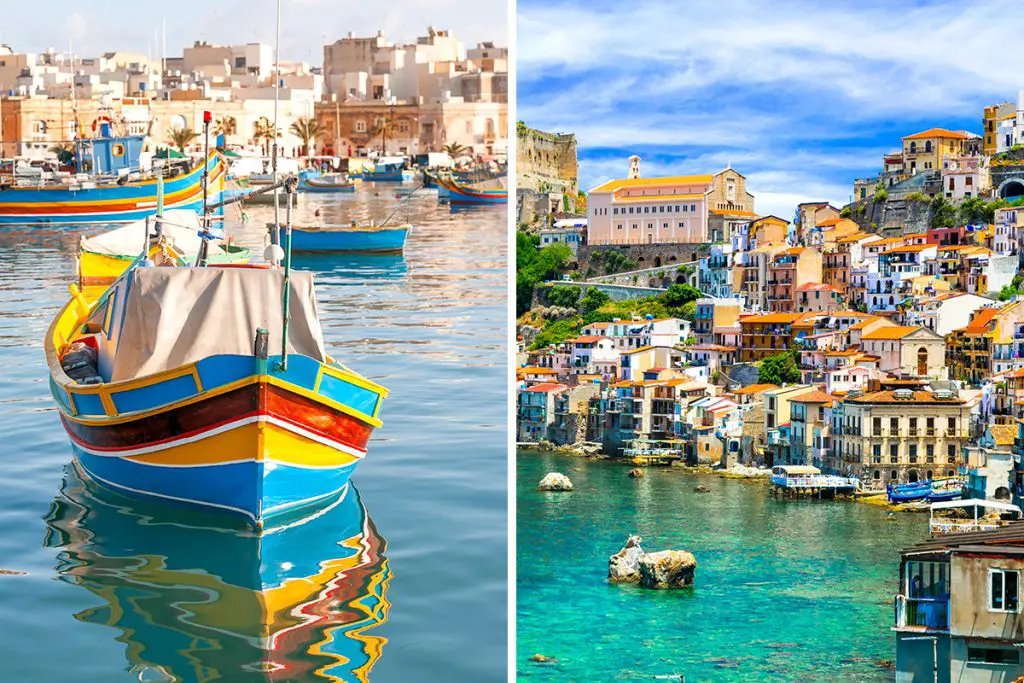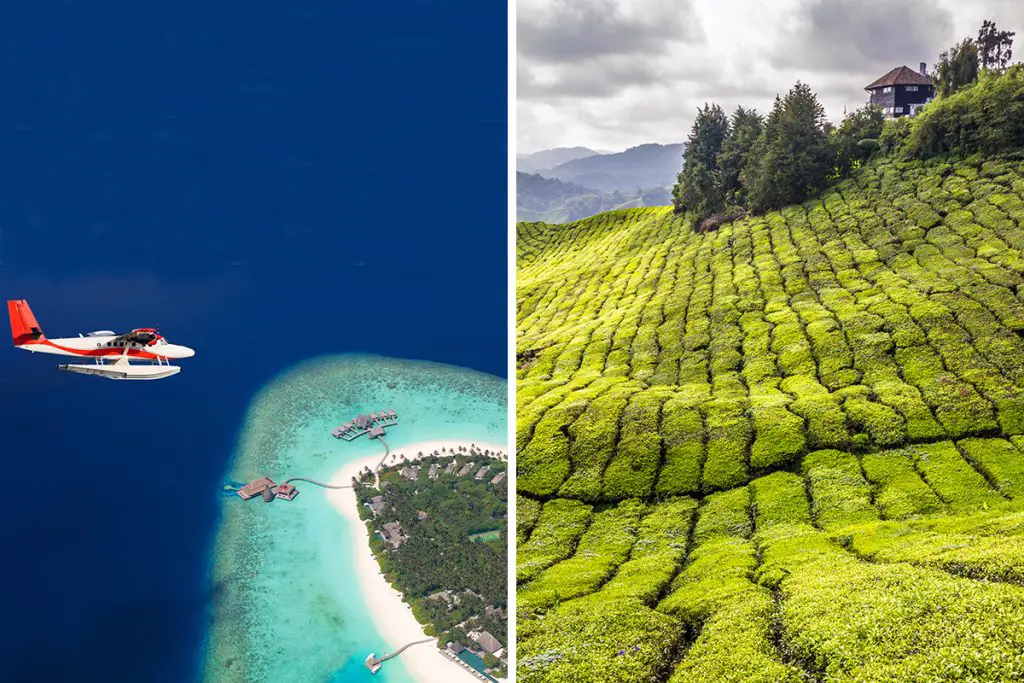You’re faced with a delightful dilemma: Malta or Montenegro? Each has its own unique allure that beckons travelers. Malta offers a blend of European and North African influences, while Montenegro serves up a rich tapestry of Slavic and Mediterranean heritages. Intrigued? You should be. Keep reading to find out which destination resonates with you.
History & Culture
When it comes to history and culture, both Malta and Montenegro are rich tapestries waiting to be explored. But how do they differ, and what makes each one special in its own right?
Malta’s history is a fascinating blend of various influences, from the Phoenicians to the Romans, and later the Arabs and the Normans. Its strategic location in the Mediterranean has made it a melting pot of cultures. The Maltese language itself is a testament to this, incorporating Arabic, Italian, and English elements.
The island nation is also known for its religious fervor, with numerous festas, or religious festivals, taking place throughout the year.
Montenegro, on the other hand, has a history deeply rooted in the Slavic traditions. It was part of various states, including the Roman Empire, Byzantine Empire, and most recently, Yugoslavia. The Orthodox Christian faith plays a significant role in Montenegrin culture, and you’ll find a plethora of monasteries and churches dotting the landscape.
The country also has its own unique set of traditions and folklore, which are celebrated with gusto.
While Malta’s history has been more influenced by Western civilizations, Montenegro has Eastern Orthodox and Slavic roots. This is evident in their respective art, music, and even their day-to-day customs. For instance, Maltese music is often influenced by Italian and British styles, while Montenegrin music has a more Balkan flair.
Both countries are proud of their heritage and have made concerted efforts to preserve it. Malta has several UNESCO World Heritage Sites, including the ancient city of Valletta. Montenegro, too, has its share of UNESCO sites, such as the Bay of Kotor, which reflects its medieval past.
In summary, if you’re drawn to a blend of European and North African influences, Malta is the place for you. If you’re more intrigued by Eastern Orthodox and Slavic cultures, then Montenegro will capture your imagination. Either way, you’re in for a culturally enriching experience.
Attractions & Activities
When it comes to attractions and activities, Malta and Montenegro offer a wide array of options that can make any traveler’s heart skip a beat. But what sets them apart? Let’s dive in and find out.
In Malta, history buffs will find themselves in paradise. Known as the “Silent City,” Mdina serves as a portal to the medieval era of Malta’s past. Walking through its narrow streets feels like stepping back in time.
For those interested in military history, the Lascaris War Rooms in Valletta are a must-see. These underground chambers were used as secret headquarters during World War II. If you’re into diving, Malta offers some of the best spots in Europe, including the Blue Hole near Gozo, a natural underwater formation that’s a hit among divers.
Montenegro, on the other hand, is a haven for outdoor enthusiasts. The Tara River Canyon, the deepest canyon in Europe, offers thrilling white-water rafting experiences. For hikers, the Durmitor National Park provides challenging trails amidst stunning natural landscapes.
If you’re a fan of architecture, the Ostrog Monastery, built into a vertical cliff face, is a marvel that leaves visitors in awe.
While Malta leans more towards historical and underwater attractions, Montenegro offers a mix of natural beauty and architectural wonders. Both countries provide unique experiences that cater to different interests.
In Malta, you can go from exploring ancient ruins to diving in crystal-clear waters on the same day. In Montenegro, you can go from rafting in a canyon to visiting a cliffside monastery, all within a short span of time.
Both destinations offer a variety of guided tours that allow you to delve deeper into their respective attractions. Whether it’s a guided tour of Malta’s ancient temples or a guided hike through Montenegro’s rugged landscapes, you’ll find plenty of options to enrich your travel experience.
In summary, if you’re looking for a vacation filled with historical sites and underwater adventures, Malta should be at the top of your list. If you’re more into natural landscapes and outdoor activities, Montenegro will not disappoint. Both countries offer a wealth of attractions and activities that promise an unforgettable experience.
Beaches
Ah, the allure of the beach! Both Malta and Montenegro boast some of the most stunning coastlines in Europe. But how do they compare when it comes to their sandy stretches? Let’s find out.
Malta is known for its rocky beaches with crystal-clear waters. One of the most popular is Golden Bay, located about 15 miles (around 24 kilometers) from Valletta. The beach is famous for its golden sands and is ideal for swimming and snorkeling.
Another notable beach is Mellieha Bay, situated about 12 miles (approximately 19 kilometers) from the capital. It’s one of the largest sandy beaches in Malta and offers a range of water sports.
Montenegro, in contrast, offers a mix of sandy and pebble beaches. The famous Jaz Beach is located just 1.5 miles (about 2.4 kilometers) from the town of Budva. It’s a long stretch of fine sand that’s perfect for sunbathing.
Another popular spot is Sveti Stefan Beach, located about 6 miles (around 9.6 kilometers) from Budva. This beach is known for its pinkish sand and is connected to a small islet by a narrow isthmus.
When it comes to beach activities, Malta’s beaches are generally more suited for water sports like jet skiing and windsurfing due to their larger waves. Montenegro’s beaches, on the other hand, are calmer and more suited for swimming and sunbathing.
In summary, if you’re looking for rocky beaches with opportunities for water sports, Malta is your go-to destination. If you prefer sandy beaches that are perfect for lounging and swimming, Montenegro has got you covered. Both offer unique beach experiences that cater to different preferences, ensuring that you’ll have a memorable time soaking up the sun.
Eating, Drinking & Nightlife
When it comes to savoring local flavors and enjoying vibrant nightlife, both Malta and Montenegro have their own unique offerings. But what sets them apart? Let’s dig in and find out.
In Malta, the culinary scene is a blend of Mediterranean and Middle Eastern influences. You’ll find a variety of seafood dishes, like lampuki pie (fish pie), and pastizzi, a flaky pastry filled with ricotta or peas. Maltese bread, known as ħobża, is a staple that you’ll find in almost every meal.
Montenegro offers a more Balkan culinary experience. Grilled meats, or roštilj, are a big part of the diet here. Seafood is also popular, especially along the coast. The traditional dish of kacamak, a type of cornmeal porridge, is a must-try.
When it comes to drinking, Malta is known for its local wines and Cisk, a popular Maltese lager. Kinnie, a bittersweet soft drink made from bitter oranges and extracts of wormwood, is also a local favorite. In Montenegro, rakija, a fruit brandy, is the traditional drink. Montenegrin wines, especially Vranac, are also gaining international recognition.
As for nightlife, Malta offers a range of options from laid-back wine bars in Valletta to bustling clubs in Paceville. Live music is common, and you’ll often find venues featuring jazz or acoustic sets.
Montenegro’s nightlife is more concentrated in cities like Budva, where open-air clubs and beach bars are the norm. Traditional music and dance are also a big part of Montenegrin nightlife.
In summary, if you’re looking for a mix of Mediterranean and Middle Eastern flavors, Malta’s culinary scene will delight you. If you’re more into Balkan cuisine, Montenegro is the place to be. Both countries offer unique drinking experiences and vibrant nightlife, ensuring that your evenings are as exciting as your days.
Shopping
When it comes to shopping, Malta and Montenegro offer distinct experiences that cater to different tastes. So, what can you expect to find in each destination?
In Malta, you’ll find a variety of artisanal goods, especially in the capital city of Valletta. Handmade lace, blown glass, and intricate silver filigree jewelry are some of the unique items you can take home. The Ta’ Qali Crafts Village is a popular spot where you can watch artisans at work and purchase their creations.
Montenegro offers a different shopping experience altogether. Here, you’ll find a range of locally made products like olive oil, honey, and handwoven textiles. Njeguški pršut, a type of air-dried ham, is a popular local delicacy that makes for a great gift. The capital city of Podgorica has several modern shopping centers where you can find international brands.
Both Malta and Montenegro offer seasonal outdoor markets. In Malta, the Marsaxlokk Fish Market is a weekend highlight, while in Montenegro, the various farmers’ markets offer fresh produce and local goods.
While Malta focuses more on artisanal and handcrafted items, Montenegro offers a blend of local produce and modern shopping experiences. Both countries also offer the charm of seasonal markets that allow you to experience local culture.
Accommodation
When it comes to finding a place to rest your head, both Malta and Montenegro offer a range of options that cater to different tastes and preferences. But what sets them apart? Let’s find out.
In Malta, you’ll find a mix of traditional and modern lodging options. The capital city of Valletta offers boutique hotels set in historic buildings, giving you a taste of the island’s rich past. Farmhouses converted into guest accommodations are popular in Gozo, offering a rustic and cozy atmosphere.
For those who prefer more contemporary settings, Sliema and St. Julian’s offer modern hotels with all the amenities you’d expect.
Montenegro provides a different flavor of accommodation. Mountain lodges in Durmitor National Park offer an immersive nature experience. In coastal areas like Budva and Kotor, you’ll find a mix of luxury resorts and quaint guesthouses that reflect the local architecture and culture.
Both countries offer a variety of vacation rentals, from modern apartments to traditional homes. This gives you the flexibility to choose a place that feels like a home away from home.
In summary, whether you’re looking for historic charm in Malta or natural beauty in Montenegro, both destinations offer a variety of accommodations that can make your stay memorable.
Family-Friendliness & Children’s Activities
When it comes to family-friendly vacations, both Malta and Montenegro have a lot to offer. But how do they stack up against each other in terms of activities for children?
In Malta, interactive museums like the Malta Classic Car Museum and the National Aquarium are big hits among younger visitors. The Popeye Village, originally a film set, has been converted into a fun park that offers boat rides, water trampolines, and mini-golf.
Montenegro also offers a range of activities that are perfect for kids. The Adventure Park in Lovćen National Park features obstacle courses set among the trees, suitable for various age groups. The Lipa Cave near Cetinje offers guided tours that are both educational and exciting for children.
Both countries offer a variety of outdoor activities suitable for families. In Malta, you can go on a family-friendly harbor cruise, while in Montenegro, rafting trips on the Tara River can be tailored for families with kids.
In summary, whether you’re looking to explore interactive museums in Malta or enjoy outdoor adventures in Montenegro, both destinations offer a plethora of activities that are sure to keep children entertained.
Getting There & Getting Around
Getting to and navigating through Malta and Montenegro can be part of the adventure. But how do these two destinations compare in terms of accessibility and local transportation?
To get to Malta, most travelers fly into Malta International Airport, located about 6 miles (approximately 9.6 kilometers) from the capital city of Valletta.
Montenegro is served by two main airports: Podgorica Airport and Tivat Airport. Podgorica is about 7 miles (around 11.3 kilometers) from the city center, while Tivat is roughly 2.5 miles (about 4 kilometers) from the town of Tivat.
Once you’re in Malta, getting around is fairly straightforward. The island has a well-developed public bus system that connects major towns and tourist spots. Taxis and ride-sharing services are also readily available. In Montenegro, public buses and taxis are common, but many travelers opt for renting a car to explore the more remote areas.
Both countries offer boat services for island-hopping or exploring the coastline. In Malta, regular ferry services connect the main island to Gozo and Comino. In Montenegro, boat tours are a popular way to see the Bay of Kotor and other coastal areas.
In summary, both Malta and Montenegro offer multiple options for getting there and getting around, whether you prefer public transport or exploring at your own pace. Each has its own set of advantages, making travel convenient and accessible.
Weather
When planning a trip, weather is often a crucial factor to consider. So, how do Malta and Montenegro stack up in terms of climate? Let’s find out.
Malta enjoys a Mediterranean climate with hot, dry summers and mild, wet winters. In the peak of summer, around July and August, temperatures can soar up to 95°F (35°C). Winters are quite mild, with temperatures rarely dropping below 50°F (10°C) between December and February.
Montenegro also has a Mediterranean climate along the coast, but it varies more inland due to the mountainous terrain. Coastal areas like Budva and Kotor experience hot summers with temperatures around 90°F (32°C) in July and August. However, the inland areas can be cooler, especially at night. Winters are generally mild on the coast but can be quite cold in the mountains.
Both countries offer different experiences depending on the season. Malta is a year-round destination but is particularly popular for sun-seekers between June and September. Montenegro is great for summer beach vacations but also offers winter sports in the northern regions from December to February.
In summary, whether you’re looking for hot, sunny beaches or cooler mountain retreats, both Malta and Montenegro offer a range of weather conditions to suit your travel needs.
Safety
Safety is a top priority for most travelers. So how do Malta and Montenegro compare on this front?
Malta is generally considered a safe destination with low levels of crime. The island nation has a robust healthcare system, and emergency services are readily available. Petty crimes like pickpocketing can occur in touristy areas, but they are relatively rare.
Montenegro also enjoys a reputation for being safe, especially in tourist areas like Budva and Kotor. The healthcare system is adequate, although not as advanced as Malta’s. Petty crimes are infrequent but can happen, especially during the busy summer months.
In terms of unique non-crime topics, both countries are relatively safe from natural disasters. Malta is not prone to earthquakes or hurricanes, while Montenegro experiences occasional minor seismic activity but nothing significant.
In summary, both Malta and Montenegro are generally safe destinations with low crime rates and adequate healthcare systems. Your choice may come down to personal preferences and the type of activities you plan to engage in.
Cost
Budget is often a deciding factor when choosing a vacation destination. So how do Malta and Montenegro compare in terms of cost?
In Malta, a meal at a mid-range restaurant can cost around €35, which is about $37.10. Public transportation is also affordable, with a single bus ticket priced at €2, approximately $2.12. Accommodation varies but expect to pay around $110 per night for a three-star hotel.
In Montenegro, dining is generally cheaper. A meal at a mid-range restaurant might set you back around €17, roughly $18.02. Public transportation is also less expensive, with a single bus ticket costing around €1, about $1.06. For accommodation, a three-star hotel generally costs around $110 per night.
In summary, while both Malta and Montenegro offer a range of budget options, Montenegro tends to be the more affordable choice, especially when it comes to food and lodging. However, both destinations offer good value for money, depending on what you’re looking to get out of your trip.
Which Is Better – Malta or Montenegro?
Choosing between Malta and Montenegro for your next vacation is no easy task, given the unique allure each destination offers. Here’s a summary to help you make an informed decision.
In terms of history and culture, Malta offers a blend of European and North African influences, making it a melting pot of traditions. Montenegro, on the other hand, leans more towards Eastern Orthodox and Slavic cultures. If you’re drawn to a diverse cultural tapestry, Malta is your go-to, while Montenegro will appeal to those interested in Slavic traditions.
When it comes to attractions and activities, Malta is a haven for history buffs and diving enthusiasts. Montenegro offers a more nature-centric experience, with opportunities for hiking, rafting, and architectural sightseeing.
If you’re keen on historical sites and underwater adventures, Malta should be your pick. For outdoor activities and natural beauty, Montenegro is the better choice.
As for beaches, Malta offers rocky coastlines ideal for water sports, while Montenegro boasts sandy beaches perfect for lounging and swimming. If you’re an adrenaline junkie, Malta’s beaches are for you. If you prefer a more relaxed beach experience, Montenegro is the way to go.
The culinary scenes in both countries are distinct and delightful. Malta offers a mix of Mediterranean and Middle Eastern flavors, while Montenegro leans towards Balkan cuisine. If you’re a foodie who loves a diverse palate, Malta will satisfy your cravings. If you’re into grilled meats and traditional Balkan dishes, Montenegro is the place to be.
Accommodation options in both countries cater to a variety of tastes. Malta offers everything from boutique hotels in historic buildings to modern amenities in places like Sliema.
Montenegro provides a range of options from luxury resorts in coastal areas to mountain lodges in national parks. Your choice here would depend on whether you prefer historical charm or natural settings.
Finally, both countries are generally safe and offer good value for money. However, Montenegro tends to be more budget-friendly, especially in terms of food and lodging. If cost is a significant factor for you, Montenegro might be the more economical option.
In conclusion, your choice between Malta and Montenegro will largely depend on your interests. Whether it’s the cultural diversity, historical sites, and culinary variety of Malta or the natural beauty, outdoor activities, and cost-effectiveness of Montenegro, both destinations promise an unforgettable experience.

